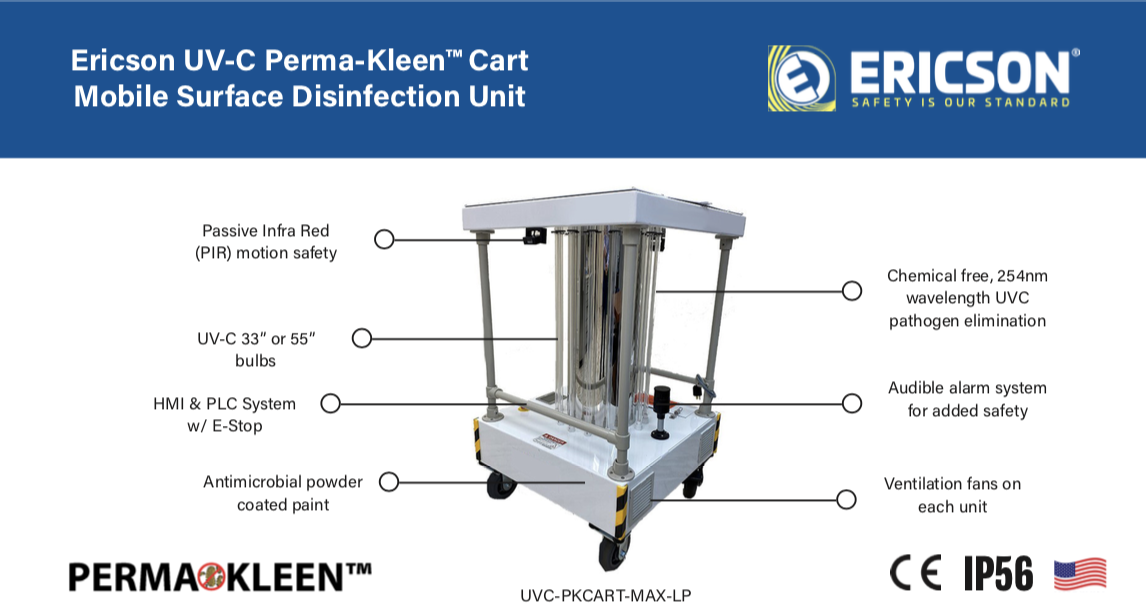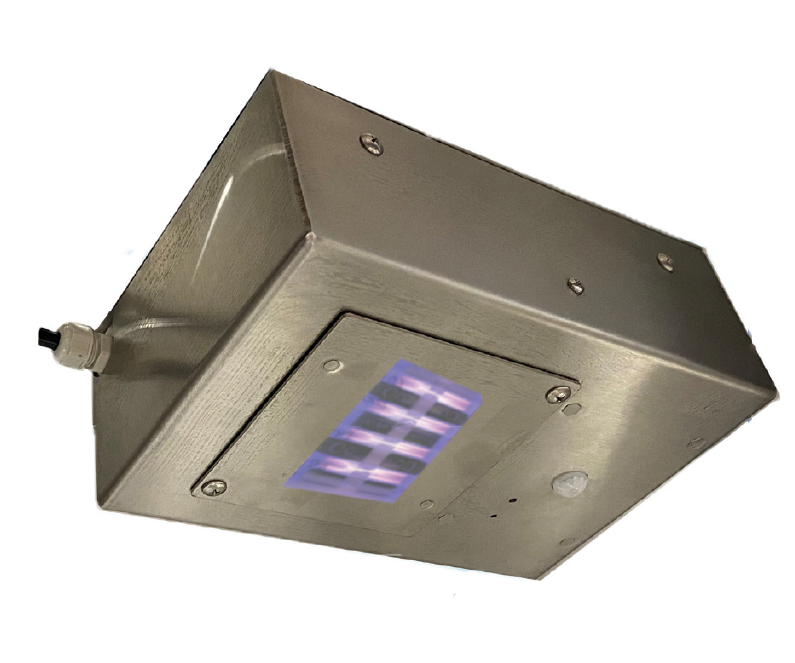UV Sanitation: The Cutting-Edge Technology Transforming Hygiene Practices
In the world of hygiene techniques, one modern technology has actually become a game-changer: UV sanitation. With its capacity to get rid of damaging microorganisms, this innovative innovation is transforming the method we approach sanitation and health. Just how does UV sanitation job, and what are the advantages it provides? From healthcare setups to food handling, UV sanitation is making its mark in various sectors. In this conversation, we will certainly explore the intricacies of this transformative modern technology and look ahead to its encouraging future.
How UV Disinfection Functions
UV disinfection works by utilizing ultraviolet light to damage or suspend microorganisms, giving a chemical-free and very effective approach of sanitation. This innovation utilizes the power of short-wavelength UV-C light, which can damaging the DNA and RNA of microbes, thus making them unable to trigger and duplicate harm.
The process starts with the installment of UV disinfection systems, which are composed of UV lights that release UV-C light. These lamps are tactically placed in areas where microbial contamination is a worry, such as water treatment plants, healthcare facilities, laboratories, and food processing facilities.
When microorganisms are subjected to UV-C light, the photons permeate their cell walls and get to the DNA and RNA within. The high-energy UV-C photons disrupt the hereditary material by creating bonds in between adjacent nucleotides, leading to the formation of thymine dimers. These dimers protect against the microorganisms from reproducing, rendering them harmless.
UV disinfection is extremely effective against a large array of microorganisms, including infections, microorganisms, and bloodsuckers. It is specifically efficient versus waterborne virus like E. coli, Giardia, and Cryptosporidium. Additionally, UV sanitation is a chemical-free technique, eliminating the demand for possibly dangerous anti-bacterials and reducing the risk of harmful sanitation byproducts.
Advantages of UV Sanitation
UV sanitation uses various benefits in the area of hygiene, making it a highly favored approach for successfully eliminating unsafe bacteria. Unlike typical sanitation methods that count on chemicals, UV sanitation uses ultraviolet light to damage the DNA of microbes, making them incapable to recreate and trigger infections.

UV sanitation is additionally highly flexible in its applications. It can be made use of in various settings, consisting of healthcare facilities, schools, food processing centers, and water therapy plants. UV sanitation systems can be conveniently incorporated into existing hygiene techniques, offering an added layer of defense against transmittable illness.
Along with its efficiency and flexibility, UV disinfection is likewise eco-friendly. It does not produce any type of dangerous by-products or residues, making it a lasting and secure technique for sanitation - uv surface disinfection. UV disinfection calls for very little upkeep and has a long life expectancy, resulting in expense savings in the lengthy run.
UV Sanitation in Medical Care Setups
In healthcare setups, UV sanitation has arised as a revolutionary method for effectively removing damaging microbes. UV disinfection functions by giving off ultraviolet light at a certain wavelength that is dangerous to bacteria, viruses, and various other microorganisms.
First of all, UV sanitation is a non-chemical description method, making it an eco-friendly alternative contrasted to typical sanitation approaches that frequently entail using rough chemicals. The usage of UV light eliminates the need for chemical anti-bacterials, lowering the risk of hazardous deposit or chemical exposure to both clients and health care workers.
In addition, UV disinfection is highly effective in killing a wide variety of microbes, consisting of drug-resistant germs such as MRSA and C. difficile. It supplies a regular and dependable sanitation procedure, making sure that all surface areas and devices are completely sanitized, also in hard-to-reach locations.

UV Disinfection in Food Handling
The application of UV see this disinfection expands beyond health care setups and discovers significant worth in the realm of food processing. uv surface disinfection. UV sanitation innovation is becoming increasingly preferred in the food market due to its capability to properly remove dangerous pathogens and boost food safety
One of the main advantages of UV disinfection in food handling is its capacity to target a wide variety of bacteria, consisting of mold and mildews, germs, and viruses. By utilizing UV light at specific wavelengths, it is possible to disrupt the DNA and RNA of these microorganisms, rendering them unable to recreate or trigger damage. This innovation can be applied to different phases of the food processing chain, including surface disinfection, equipment sanitation, and water therapy.
UV sanitation provides a chemical-free and non-thermal method of sanitizing foodstuff. Unlike typical disinfection methods that count on chemicals or warmth, UV technology does not leave any kind of residue or alter the preference, appearance, or dietary value of the food. This makes it an excellent option for industries that require rigorous adherence to high quality standards.
Additionally, UV disinfection systems are very easy to run and set up, requiring marginal maintenance. They can be incorporated right into existing processing lines without triggering significant disturbances to the manufacturing process. In addition, UV systems have a quick therapy time, permitting continuous processing and decreasing downtime.
The Future of UV Disinfection

One area where UV disinfection is anticipated to make substantial advancements is in the field of health care. With the surge of antibiotic-resistant microorganisms and the need for much more reliable sanitation approaches, UV light has the possible to play a vital function in minimizing healthcare-associated infections. UV sanitation systems can be made use of to decontaminate surface areas, tools, and also the air in health care centers, helping to stop the spread of harmful microorganisms and enhance client security.
An additional sector that can gain from developments in UV sanitation innovation is the food market. UV light has already verified to be an efficient technique for decontaminating food products and minimizing the danger of foodborne health problems. As innovation improves, we can expect to see more efficient and cost-effective UV sanitation systems being applied in food handling plants, making sure that the food we eat is safe and free from dangerous germs.
Final Thought
In final thought, UV disinfection is an innovative modern technology that is changing hygiene practices in medical care setups and food handling. By utilizing UV light to kill or shut down bacteria, it offers many benefits such as safety and security, effectiveness, and efficiency. With recurring innovations in this field, UV disinfection holds terrific prospective for the future of hygiene, supplying a reliable and sustainable option for maintaining tidy and sanitary environments.
UV disinfection is a chemical-free technique, removing the demand for possibly damaging disinfectants and decreasing the risk of damaging disinfection spin-offs.
Unlike traditional sanitation techniques that depend on chemicals, UV sanitation makes use of ultraviolet light to damage the DNA of microorganisms, rendering them not able to reproduce and cause infections. Unlike conventional disinfection methods that depend on chemicals or heat, UV modern technology does not leave any kind of deposit or modify the taste, appearance, or nutritional worth of the food. As modern technology boosts, we can expect to see a lot more effective and cost-effective UV sanitation systems being implemented in food processing plants, guaranteeing that the food we consume is safe and cost-free from dangerous microorganisms.
In final thought, UV disinfection is an innovative technology that is changing hygiene techniques in medical care setups and food handling.
Comments on “Transforming Sanitation Criteria: The Role of UV Surface Disinfection in Health and Safety”